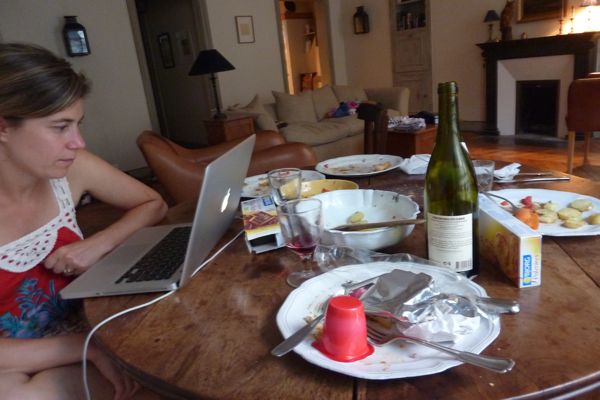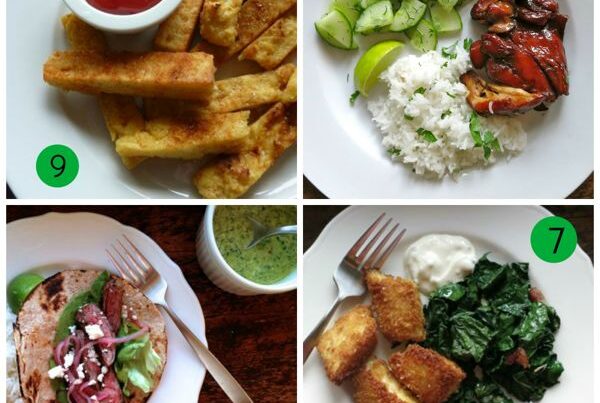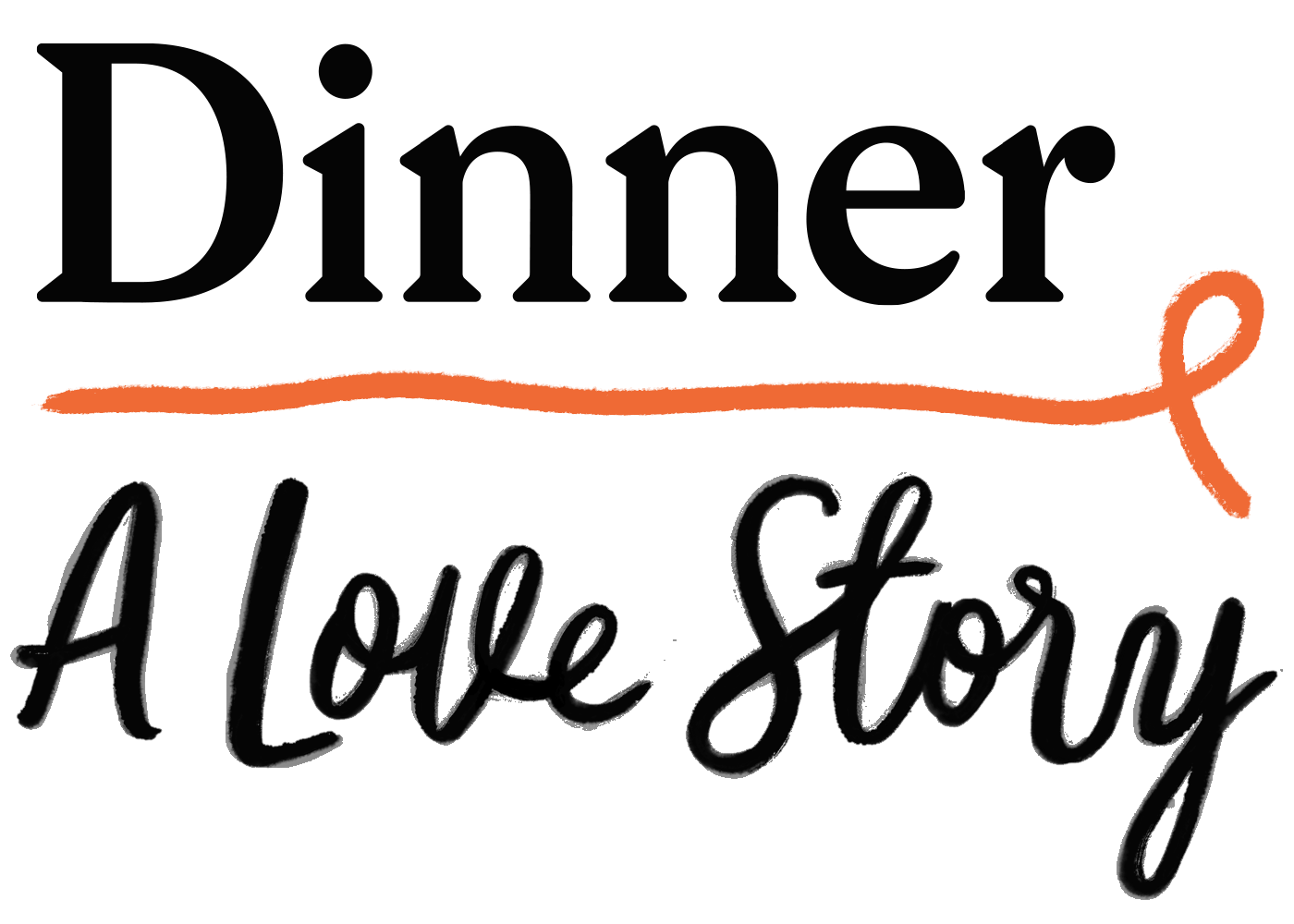I hear from a lot of you that what you like the most about our site is that you never know what you’re going to find from one post to the next. I love getting this note — because it confirms that a) you guys are paying attention, and b) because it allows me to write inside-baseball posts like this one and know that you will still come back tomorrow in search of the perfect tandoori burger. Correct?
Today I want to answer a question I’ve been asked a lot: How do you write this blog? Which I’m also going to interpret as How do you write and How did you start? It’s an involved question, one I’m not sure I’m entirely qualified to answer yet, and one that, you’ll see, sends me in several different directions below. (To give you an idea, the working title of this post for the past few months had been “Everything I Learned About Blogging I Learned in Magazines” before I realized I had so much more to say.) The truth is, I had no idea what I was doing when, in the winter of 2010, GoDaddy told me that Yes! The URL dinneralovestory.com is available! But I’ve figured out a few things along the way and thought it might help those of you thinking of starting your own blog. (As for starting a career in food writing, you cannot get any better than this post by Amanda Hesser.) What I wrote below should not be mistaken for The Definitive Rules of Blogging 101. There are about eight million people out there generating eight million hits a day and maybe even making money from it — and if that’s what you are after, you should skip this post and seek their advice. I’ve accepted now that this site will most likely never be the source of a down payment on that house in Block Island overlooking Mohegan Bluffs. (Why God, Why?) But for a satisfying job that has led to unexpected places, these are the rules I’ve lived by.
Lesson 1: Shorter Isn’t Necessarily Better. Better is Better
My crash-course in blogging lasted about two weeks. I had just lost my job at Cookie, the parenting magazine where I was editing features, and a website called to see if I could help out launching a few blogs on their lifestyle vertical. I was feeling a little lost — not to mention there was not one more corner of the house to organize, which seemed to be my way of dealing with my sudden daily aimlessness — so I said yes and pretty soon was on the 8:43 commuter train again, headed to a downtown office where the staffers checked every box for website start-up. (Skull caps: Check; Bright Eyes station playing on Pandora: Check; Enrollment in artisanal, fetish-y food project: Check.) Everything happens faster online (first lesson) so my supervisor did not waste anytime laying down a few crucial rules about blogging to his seemingly prehistoric new freelancer. Don’t write in long paragraphs. Don’t write long at all. Online readers like quick hits. They like lists and bullet points whenever possible! Say things that will start a conversation in the comment field. (Or better yet, incite a riot in the comment field!) Tweet everything! Post everything on facebook! And my favorite, which I think about every single day: Remember: Producing content is 10% of the job; Promoting it is 90%. Ay yi yi.
For week one I just followed orders and repeated to myself “Don’t be old.” But by week two, I was done. Here’s the thing. My supervisor was right about every single thing above. If you want more visitors (and any blogger who tells you he or she doesn’t is lying) you can get there more readily by following all of his rules. But you could also assume a certain amount of intelligence from your reader and write the way you want to write, the way most readers want you to write, that is, honestly. The masses might not come right away, but if you take time to write something that is pure and resonant and comes with no behind-the-scenes agenda, people will respond. And you will respond to their response. I remember early on in my DALS life when my ambitions were a little grander, I called my VC friend Roger in Palo Alto for a counseling session on building the “business.” He gave me the best piece of advice — or at least the best piece of advice that I felt most comfortable with. Don’t think about anything but the content for the first year. You need to earn the trust of readers and you need to distinguish yourself. The only way to do that is by paying close attention to what you are producing every day. Roger flip-flopped the formula for me and set me back on the path I knew so well from magazines, and that had never really led me wrong before: 90% of your time should be spent thinking about content, fresh new ideas, and presenting those ideas from a fresh perspective. Your perspective. Everything else? 10%.
Lesson 2: Define Your Mission
One of my earliest magazine jobs was at a major women’s lifestyle title. The editor at the time was a veteran magazine editor named Carrie — she had been in the industry for 25 years, wore all black along with trademark black-framed editor glasses. I didn’t know a whole lot, but I knew enough to know that I should write down every single thing she said and commit it to memory. At our Tuesday line-up meetings, she’d hold up some new book that we should be paying attention to (I one-clicked Botany of Desire as soon as she held it up saying less as a suggestion than an absolute command, “Pay attention to this guy. His name is Michael Pollan”); or of a magazine that was doing something new and exciting visually (Everyday Food! RIP! ); or simply what her latest fashion philosophy was. (“Gap Clothes, Prada Accessories!“) On the Tuesday meeting after September 11th, she told us that she had thought long and hard about our magazine and its place in the new world and decided there was going to be a revamped mission. “We are not a magazine people come to for the news” she told us. “We are a magazine that tells people how to handle the news.” She went on to say that from that point forward the mission of the magazine could be pared down to three simple words: Comfort, Community, and Control. They became known as the three C’s, and if we had an idea we wanted to assign for the magazine, it had better fit into that description. Boy did we roll our eyes at the Three C’s! But boy did they ever work. Having a mission sharpened our focus. It helped us define who we were and why people came to us. When I moved on to my next job and oversaw a large section of the magazine, the first thing I tortured my team with was defining its mission. I also spent about six months writing the mission for this blog. I knew it would be as important for me to lay a blueprint as it would be for anyone who happened to drop by to see what the heck I was up to. This page is one of the most visited of the site. Which is another way of saying This is where I reel them in.
Lesson 3: No Harm in Making Things Pretty
If you spend a little money on a good designer, you will be ahead of 99% of the websites out there. It can take a lifetime to articulate to a designer the look you are after (I was lucky to earn my Masters in this at Conde Nast) but it helps to “pull scrap” as Carrie used to say. Bookmark anything online that you respond to — not just blogs, but websites, textures, colors. Create an inspiration board on Pinterest to stay organized. Or do it the old fashioned way, cut layouts out of magazines and pin it on an actual physical bulletin board. Fonts are incredibly important. Colors are incredibly important. I knew I didn’t have have a lot of time with online readers so I knew the visual first impression would be crucial. When I was working with my very gifted designer, Ava, I sent her photos of baby birds with their mouths wide open. (Because my dad used to say that his three kids asking to be fed and clothed and, you know, parented, conjured up this image.) After a few back-and-forths she landed on the masthead you see at the top of this blog. I love those birds and feel they are a crucial part of my identity. She also must’ve gone through 25 different logos before creating the chalkboardy font. I think because Dinner: A Love Story fell under the “mommy blog” umbrella, her first instinct — like a lot of people — was to go precious and cutesy and retro. So for a while there, every time she sent me something to review, I kept returning it to her with the same instruction: “No! More f–ked up!” The creative director at Cookie (who is now at Bon Appetit) taught me that one. Thanks Al!
Lesson 4: Ask Yourself: What’s the Hed & Dek?
This might sound a little crazy, but it took me a little while to learn that anything worth reading, for the most part, has a central idea behind it. It doesn’t have to be a big central idea, but it has to have an idea. You need to ask yourself, what is the point of writing this? Blogging is a dangerous medium for the same reason that it is a marvelous one: because you can do whatever you want whenever you want to and however you want to. I don’t think there’s a single person out there who hasn’t read a post by someone and wondered Who cares? Why is this person spending so much time on this? In magazines, there was a little exercise we’d do beforehand to make sure this never happened. We’d do a little something called an OUTLINE. It didn’t really matter what the outline looked like, what was important was the Title and the Subtitle. (Or, in magazine parlance: “the hed and the dek.”) What is the hed and the dek? Before I write anything — whether it was a chapter in my book, a post, a magazine story — I try to ask myself this. If I can’t explain it in a title and a subtitle, I’m in trouble. If I can, there’s my idea. It’s really nothing more than the topic sentence we learn about in third grade writing. Once I know what I want to say, I spend the rest of the piece saying it.
Lesson 5: Seek Out an Editor (Preferably an Editor Who Knows What He or She is Doing)
You need someone circling your copy saying things like: Build to this more. Have a point of view. Tell a story. Paint more of a picture. You need someone to say to you “There’s almost always a better way of communicating that thought without using an adverb,” as Andy did early on in my career. You need someone like Tom Prince, one of my first mentors in magazines, who while editing a story I wrote for Real Simple, came across the word “spud,” circled it, then wrote in the margin: “Never.” I had a B.A. in English from at a pretty solid New England private college and yet I graduated having no idea how to write a compelling lead for a story. For four years I wrote 10-page analytical papers on Toni Morrison and Henry James and Kate Chopin and did fine (I’ll conveniently ignore the C-freaking-minus I got on that Leslie Marmon Silko paper) yet somewhere along the way, I forgot how important it was to tell a story, to build to something, to set up the idea in a way that keeps the readers engaged. To use words that advance the story, not words that trip it up. To use strong verbs. (I’ll never forget coming across a sentence my friend Mike wrote in Esquire a hundred years ago — “We cocktailed-and-hors d’ouevred all night…” — and thinking: You can do that??) My editors in magazines were there to remind me that academic writing is good for academia. But writing with style and voice? There’s nothing wrong with that — in fact, that’s the goal.
…About that Voice
When I feel flat or just plain lost — as I do almost every week, just ask my husband — the medicine I crave is reading writers with strong voices. You know how when you travel to another country then after a few days start thinking in that country’s language? That’s what happens to me when I am immersed in good fiction. The trick is not to steal other writer’s voices, but to let them loosen your own. Like pasta water with sticky pappardelle. The quickest-acting tonics for me are contemporary short stories by masters like Matt Klam (“Issues I Dealt With in Therapy” in Sam the Cat) Jhumpa Lahiri (anything in Unaccustomed Earth), George Saunders (“Semplica Girl” in Tenth of December); but I’ll periodically jump in and out of classics like My Antonia and Vanity Fair too. Also, have you read Catcher in the Rye since your English teacher made you read it in 9th grade? I dare you to pick it up and not immediately want to pen your own Great American Novel. I dare you!
Lesson 6: Think About Pacing & the All-powerful “Mix”
That whole thing about “never knowing what you’re gonna get” when you show up on our site? That’s not as random as it seems. Andy and I went running together a few months ago (which I can’t stand, for the record, because he thinks I’m running slower than him on purpose! to make him mad!) and spent about one mile of the total three arguing about what should go live that Wednesday: Shaun Tan’s Book Recommendations or Mushroom Pizza? (Bet that’s the first time that sentence has ever been written.) What’s the difference? Well, not to make you feel guilty or anything, but we care a lot about the way you read this stuff. And that means thinking about the “mix” of the content and the way one post follows another. We know that you probably don’t want three fish recipes in a row. Or three non-recipe posts in a row. Nor do you want to read a 3,000-word rant right after a 3,000-word rant. (Which is why tomorrow, you will most likely be getting a one-sentence post. Are you so sick of me? I can’t believe you are still reading.) At any given moment on this website you can scroll down the home page and find some combination of content that instantly telegraphs the mission of this website: There will always be photographs of food, family, and books. Again, I have magazine-making to thank for this instinct.
Lesson 7: Don’t Not Write Because Someone Else Has Done it Better
If you are thinking about starting a blog or a book or some other ambitious writing project, do yourself a favor, do not google the topic of whatever it is you plan to write or blog about. It will be depressing and almost impossible for you to not react like this: “Why am I bothering when so many more talented people have beaten me to it?” If you ignore this advice and start spiralling down to dark places, then just watch Patti Labelle killing the ABCs on Sesame Street. Do you think she said to herself, “I’m not going to bother singing the alphabet when at least a zillion people have sung it before me?” Doubt it. Remember: Every story has been told, but not your version of it.
Lesson 8: You Do Have Time
Every time I hear someone say “I don’t have time to do all that” I always reply the same way: “Well then you are a perfect candidate to write!” No one has time, and if you are busy, that means you have lots of fertile soil to till for content. Deadlines and limited blocks of time are your friends. They are productivity gods. Recently I had an entire day to work on edits for a Bon Appetit story. What should’ve taken me 3 hours took me 10 because I expanded it to the amount of time I had. And not that I am in any way comparing myself to Jack White here, but in this clip about his creative process (courtesy of the most excellent Talent Code), he says basically the same thing: “Deadlines and things make you creative. Opportunity and telling yourself you have all the time in the world? All the money in the world? All the colors in the palette? That just kills creativity.”
I never really know how long a post is going to take when I start writing. Some days I will write one in the 20 minutes between dropping off the kids at the bus stop and catching the train to the city. Some posts that I think will be pre-coffee toss-offs, take days. Andy is famous for sitting down at the computer within ten seconds of getting an idea, then 72 hours later emerging from a stupor saying, “Can you believe we just spent three days of our lives writing that?” (And then a week later, he’ll write the instant classic Stromboli in under 15 minutes.) When you are a writer, there has to be a certain amount of pain-denial going on every day. If I remembered how long and involved some of these posts tend to be, I might not ever embark on them. This post you are reading was first entered into my WordPress queue on May 3, 2012. It didn’t take eight months to write. It took eight months of accumulating thoughts (every time I had one, I’d scribble it in the post draft) and then about a day of polishing everything up. As any dinner-maker will appreciate, it’s always a little more efficient when you don’t have to start from scratch.
Lesson 9: It All Goes Somewhere
There is literally no reason not to write. Nothing bad can come of it. Even if no one reads what you are writing, you have a chronicle of something. You are creating something. I’m not the first to say it, but the act of creating almost always leads you somewhere you never would have gone otherwise, and makes you see things differently. How is that ever bad? The luckiest among us might even get nice notes from readers saying how much what we’ve written has inspired them. I’m telling you, if you are coming from a real place, there’s no question that will happen.






@ Jen P: I’ve been really enjoying Storyist. It has some great features like storyboarding, and the ability to attach notes and research to a project, plus a lot more stuff I’m still figuring out. And there’s an iPad app, too. It’s worth a look. storyist.com
Fantastic advice. This is so refreshing. I spent the weekend at a food blogging conference that I used to enjoy, but this time I came home feeling downtrodden and frustrated. A lot of it has to do with the fact that so many people enjoy talking to bloggers about marketing and social media without first encouraging them to create content they’re proud of. Did you read this interesting article in the WSJ about branding? This part in particular resonated with me: “Increasingly, individuals are producing a self-brand not to promote one’s work or accomplishments, but to promote their very presence as a commodity in a market society. Indeed, those various reasons one might garner public attention based on what one does, rather than how one is packaged, now seem almost antiquated, old-fashioned ideas in the contemporary economic context. I worry about what this means for a new generation of students and scholars who have been taught to value domain names and retweet campaigns over books and articles and ideas, perception and hype over content and substance, when what we promote becomes the very act of promotion itself.”
Thank you, Jenny! Just what I needed to hear today. And that last paragraph? Beautiful sentiments and reveals your gracious spirit!
I love this post. I think I’ve been hanging out in the wrong bloggy camp, thinking my blog is crap because it doesn’t fit with the slick mommy blogs with their tutorials and organizing projects and recipes photographed without a fingerprint in sight.
I do love to write. My blog attracted the attention of a publisher and they offered me a job as cookbook editor (I took it – I love it). I love my blog. Thank you for the reminder and the inspiration. Thank you.
I tripped over your blog on my friend’s blog today and I enjoyed this post. I love the personal essay form, and have tried to be a decent essayist since I first learned about them in college. For the past 20 years, my essays have been orphaned, neglected, misfit and skiwompus flotsam, lost and forgotten. Now that I have a blog, I can write one, post one, and it has a life in its native form in the perfect medium. It doesn’t matter if anyone doesn’t read them, but it sure makes me happy when someone does. I also have a repository for the insipid little things that get my attention, like hot pink pants or what the queen says in private about prince Harry’s naked ass on the Internet, followed by the princess’s bubs, and the ironic ways in which the universe says that it doesn’t matter if you’re bad or good, rich or poor, we all arrive at the same destination.
I also appreciate the point about a deadline making you creative–I want to add to that and say it’s not so much the deadline itself, but the framework. Iambic pentameter or whatever you happen to have in the larder, or a window of time are all frameworks that inspire the most amazing results. Jazz. Improvisation is what happens when you know your instrument, be it a pen or a pan. But ask me to change a tire or debug source code in three hours and all you’ll have is a hot mess.
Tanks for the food for thought!
I hope you know how darn helpful this post is. thank you.
That’s the best thing you’ve ever [written] all year.
You can tell Abby I was inspired to write that comment by her (over at the 15-minute “Stromboli” post). Seriously, thanks for this. It makes me want to write…which I’m suspect was your mission for this post.
I think you’re really great. 🙂 I seem to find myself talking about DALS every other day with my coworkers. I just e-mailed the link to your blog to several of my friends! Thanks for your advice and delicious, easy recipes!
Thank you, this is the most thorough “how to start blogging” post i have even seen. You did a great job. A lot of cooking blogs dont even really write anymore, they just take fancy overly styled food pictures.
I just love this. Can I say how lucky we are as readers to read your content? Thank you so much for your honest and eloquent voice. A+ (that’s a grade for the whole site)
I am a newsletter subscriber. Do I win the Lodge cast iron skillet?
This is such a comprehensive list. Thank you for sharing your opinions on blogging. I am crippled by #7 all of the time.
Thanks so much for this, especially #7. I have come back to read that more than once. I’m just getting started, and the more I look, the more established, gorgeous blogs I find doing the same thing I’m doing, only better. Your advice helps me keep chugging along, and hopefully I’ll find my place in the blogging word before long.
Loved this article, both for its practical advice and for the way your own writing models all that you said. I’m inspired! Thanks for writing this, it will be a reference for me again and again.
I know I’m a little late to the comment party but I just wanted to let you know how much I loved this post. I so enjoy your blog, your voice, your husband’s voice, the fact that there’s a real family behind this site. As someone who blogs for fun and is quite sure no one is reading my words, I’ve been using my site as a type of journal, a place where I can keep going daily, writing-wise, because I’m under the impression that it can’t hurt, and I’m going to keep with it as long as I’m still enjoying it. I really appreciate your advice. Thanks so much for sharing xo
I found this sentence very helpful: “At any given moment on this website you can scroll down the home page and find some combination of content that instantly telegraphs the mission of this website: There will always be photographs of food, family, and books. Again, I have magazine-making to thank for this instinct.”
Thank you for this, you encouraged me to bring my food blog out of hibernation. It feels great to be writing and talking about food again. Your encouragement and example have been invaluable!
I REALLY needed to hear this! I am embarking on this blogging journey with new insight, now. When I first started college, I wanted to write for magazines like Teen Vogue. For some reason I ended up graduating in Broadcast Journalism, but now I find myself doing what I originally loved (since blogging and magazine writing go hand in hand!) THANKS again.
xoxo.
I almost deleted my comment when I realized mine would be the 94th comment on this post, but I’m going ahead because your lesson No.9 says ‘It all goes somewhere’
Thanks for this informative post.
Jenny,
Thanks so much for this post. This is absolutely great and very inspiring, especially Lesson 7. 🙂
Any chance you could make your ink print darker? Thank you.
Thank you for this post – I’m a sometimes writer and lately my lack of confidence has been stopping me from going forward. This post gave me a little boost to keep on going no matter how discouraged I might be 🙂
Thank you for writing this.
I am a bit late.. but thanks for this awesome post. I’ve been wanting to start blogging for years but as a fan of so many amazing, well written, inspiring blogs (this one included), I just didn’t think I could do it . You and Patti Labelle gave me the push I needed. I started blogging and I am having a blast. Although my family and friends are the only readers I will ever have, I am so glad I jumped in. Thank you so much.
Thanks for taking the time to write this for us fledgling bloggers.